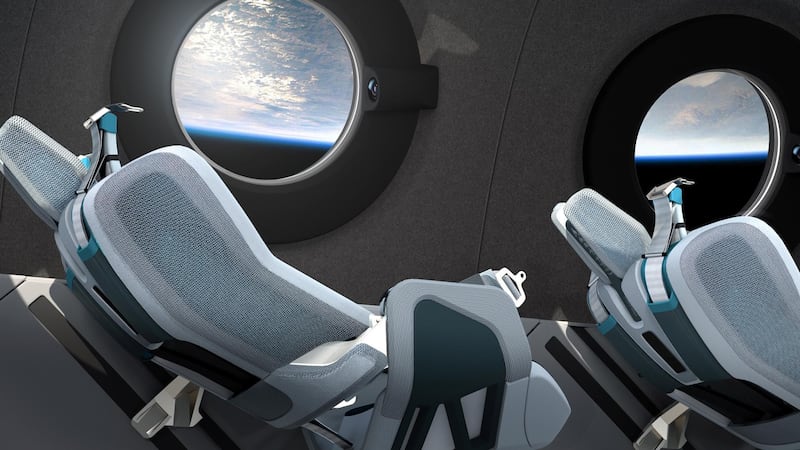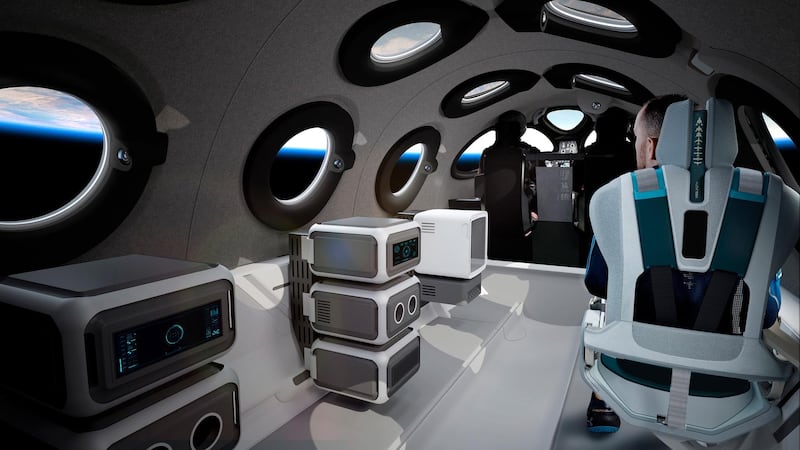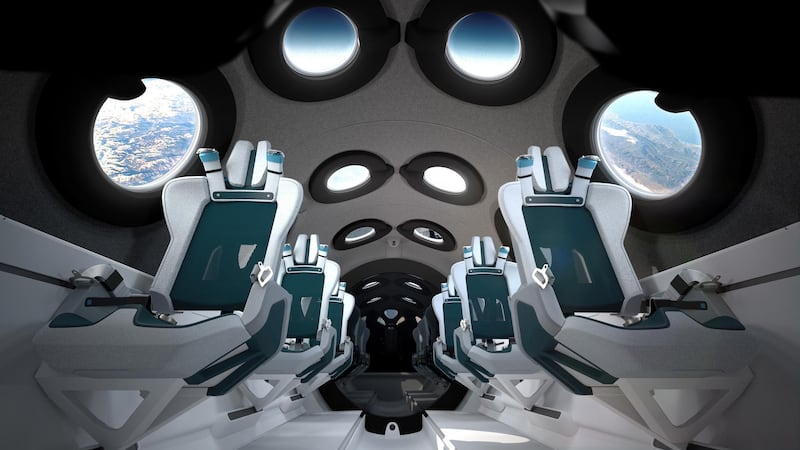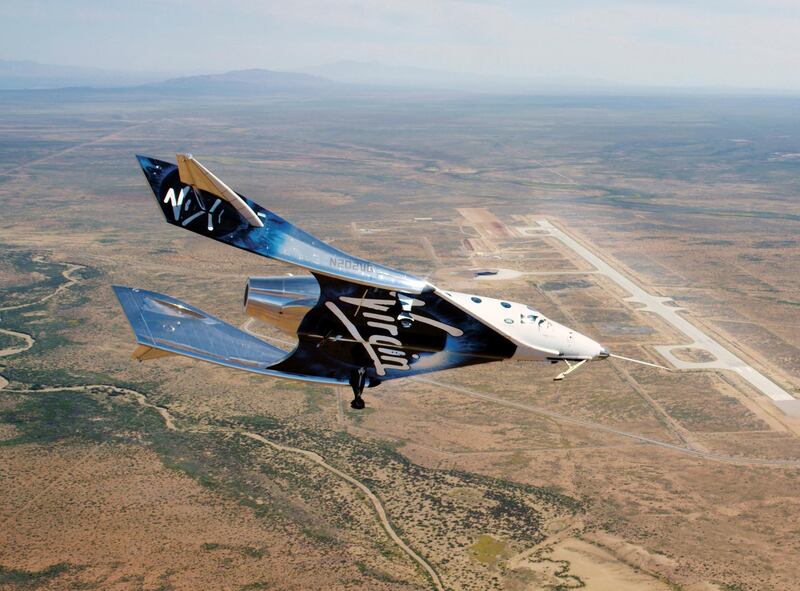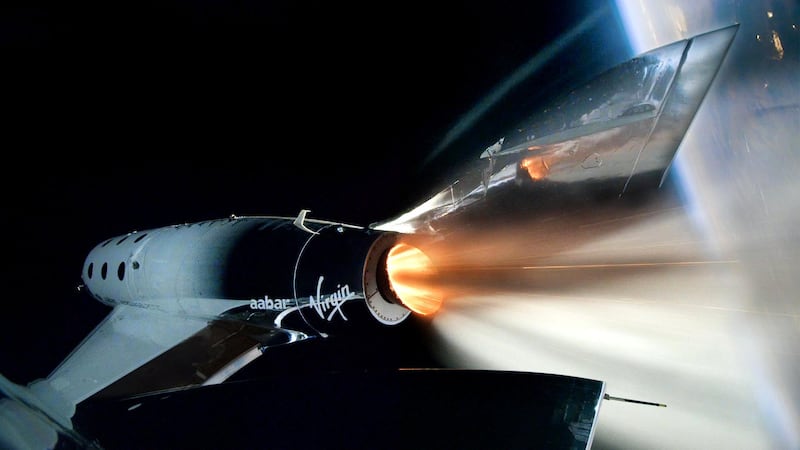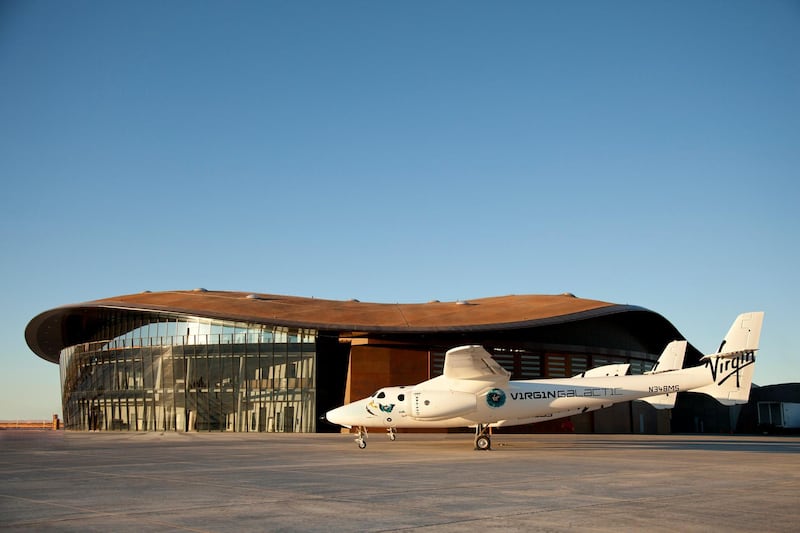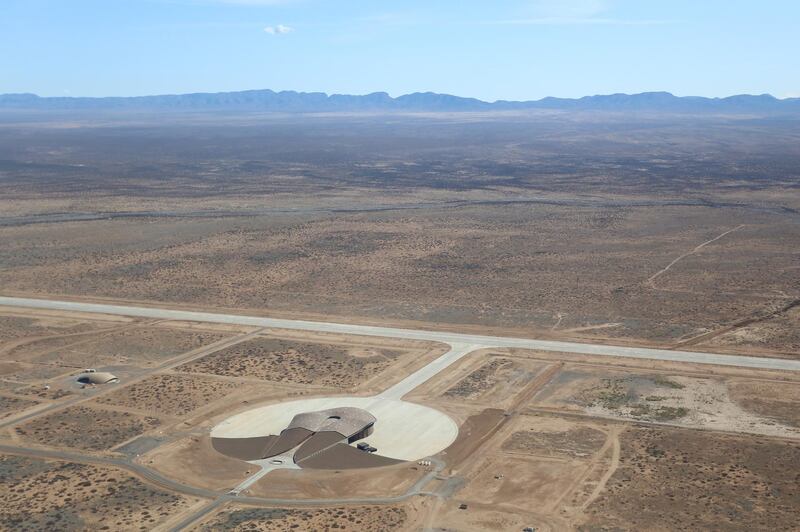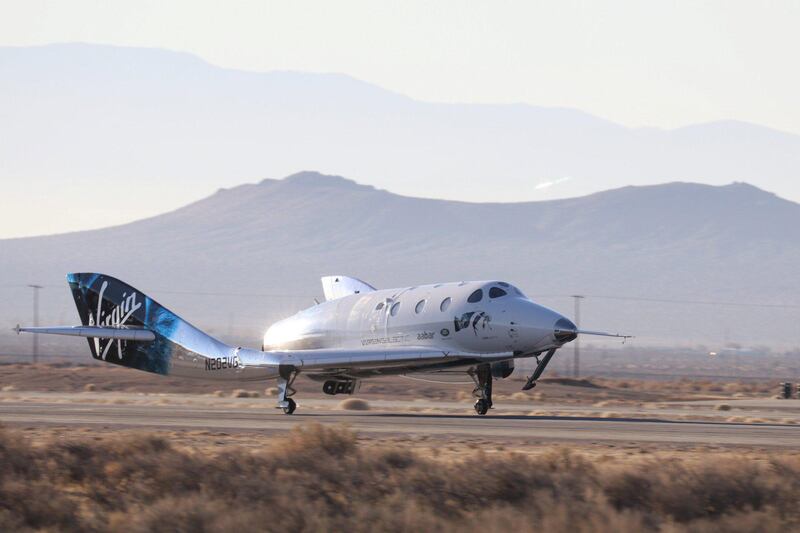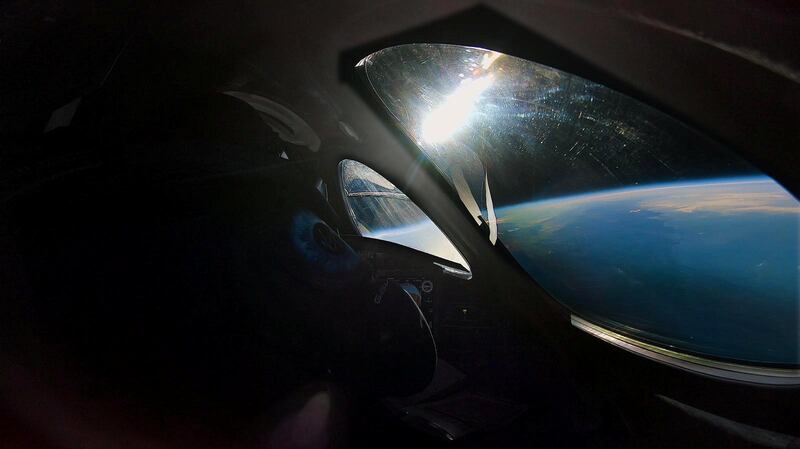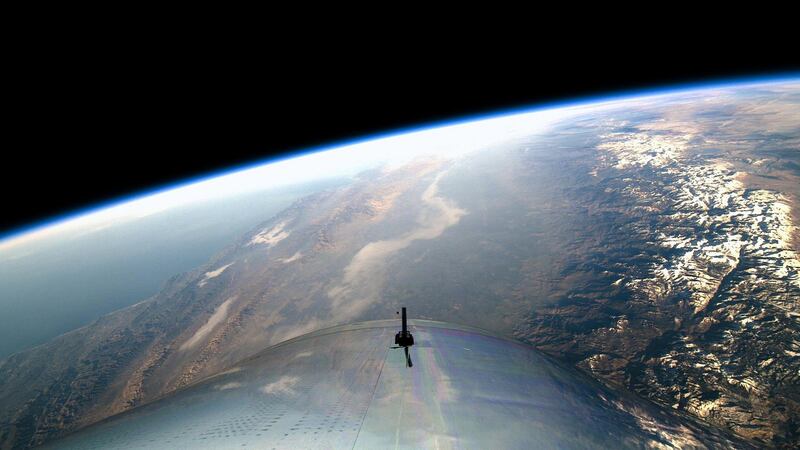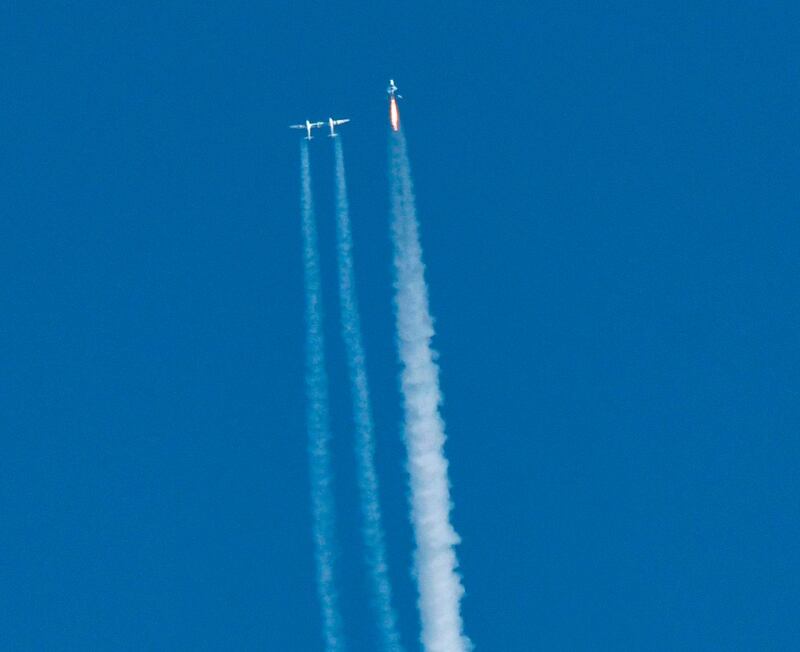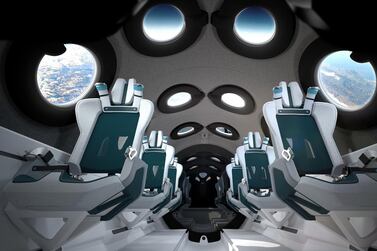The modern space race is getting closer to making astronauts out of tourists – and a new survey finds that there is already pent-up demand, even as questions linger over the industry.
About 39 per cent of people with a net worth of more than $5 million (Dh18.3m), a total addressable market of about 2.4m, are interested in paying at least $250,000 (the current price) for a Virgin Galactic flight to the edge of space, according to financial services firm Cowen.
These findings come as Virgin Galactic takes another step towards offering commercial space flights, which will one day provide paying customers about six minutes of weightlessness as the spacecraft hurtles through Earth's atmosphere.
The window to begin spaceflight tests opens up on Thursday, October 22 with the launch date still to be finalised. The flight will be the first of two that the space tourism company must complete before its founder, Richard Branson, hops on board an event that will usher in Virgin Galactic's commercial flight service.
Will there be repeat customers?
While opportunities may soon open up, much remains unproven – including the market for space tourists, Laura Forczyk, owner of US space consulting firm Astralytical and author of Rise of the Space Age Millennials, tells The National.
One issue that the Cowen survey did not address is the question of repeat customers.
"What happens after those high-worth individuals fly? Will any of them fly again?" says Forczyk. "If space tourism is seen as a once-in-a-lifetime purchase and the price isn't lowered to increase the customer base, potential customers will decline once operational flights begin."
This means ticket prices for future trips to space are likely to come down in order to attract new customers.
An accident, she adds, is also "inevitable".
“The negative news coverage and government inquiry will hurt the confidence of future customers and potential customers. How the spaceflight providers respond to accidents will set the tone for the space tourism community.”
The US government, the leading regulator for this industry, currently has no procedures for certifying the safety of launch vehicles or space travel for tourists, according to The Future of Space Tourism, a Congressional research report that was released last month.
What will the experience actually be like?
Forczyk is in the research and interviewing stages of writing a book about space tourism and private spaceflight. She has interviewed 14 astronauts who have been to space and seven "future flyers".
A recurring theme from these interviews has been the so-called overview effect, she says – the concept that seeing Earth from space will reveal "just how connected we are to each other and to the planet".
This accounts for why early designs for low Earth orbit shuttles have cameras and mirrors on board. Virgin Galactic's VSS Unity has plans for 16 cabin cameras, plus those in the cockpit and mounted externally. These "will generate high-definition output to provide everything from the first Instagram posts to a beautifully edited and historically significant personal movie," the company says.
The cabin also includes a first for space travel: a large, circular mirror on the aft bulkhead which, by adding a tint to the reflective surface, allows astronauts to view themselves while weightless and illuminated by the natural brightness of the Earth.
But this moment should not be about self-promotion, Forczyk says, even though it may well usher in a new kind of intergalactic influencer. "It's about sharing a rare experience with those around the world who are not yet able to fly in space themselves. It's about showing them that a wide diversity of people can fly in space, and maybe one day they can, too."
Who's in the space tourism race?
Elon Musk's SpaceX is also in the space tourism race. As Virgin Galactic's nearest competitor, the company is currently in the lead in terms of milestones.
SpaceX has been running regular cargo resupply missions to the International Space Station since 2012 and pioneered the use of reusable rockets. In May, the company's Crew Dragon spacecraft sent people to the ISS, and returned them safely to Earth last month.
Its next-generation Starship rocket aims to eventually launch up to 100 people into space, and perhaps all the way to Mars, but Musk said the rocket has far more to accomplish before humans are strapped in.
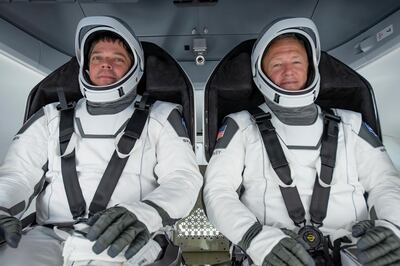
"We've got to first make the thing work; automatically deliver satellites and do hundreds of missions with satellites before we put people on board," he said, speaking at the recent "Humans to Mars conference.
Others are also elbowing in. Boeing is developing its Starliner spacecraft and hopes to begin carrying astronauts to the ISS next year.
Jeff Bezos's Blue Origin meanwhile, has eyes on the Moon.
Last month, the company, alongside Lockheed Martin and Northrop Grumman and Draper, delivered a mock-up to Nasa of a lunar lander. The team is now collaborating with the space agency to test it and prepare for crewed missions to the moon that could begin as early as 2024.
"Testing this engineering mock-up for crew interaction is a step towards making this historic mission real," Brent Sherwood, Blue Origin's vice president of advanced development programmes, said.
Nasa’s partnerships with Blue Origin and SpaceX, among others, is intentionally changing the economics of space travel: driving down cost and spurring innovation. These dynamics will allow for a market to open up to space tourism in the future.
“The concept of a space tourist is fairly new,” according to the US Congressional report, but it is not unheard of.
In 1998, US billionaire video game developer Richard Garriott co-founded Space Adventures, the only private company to send paying customers to orbital space so far. Space Adventures sent a total of seven paying customers to space between 2001 and 2009, aboard the Russian Roscosmos' Soyuz rockets when seats were available.
Seats sold for approximately $20m, says Forczyk.
Extensive training in Russia, the high cost and physical requirements were likely to have all been prohibitive.
"After Nasa's space shuttle programme ended, Nasa began purchasing flights from Roscosmos at a much higher price, eliminating space tourism seats," she says.
But these days, attitudes - and shuttles - are swiftly changing.
